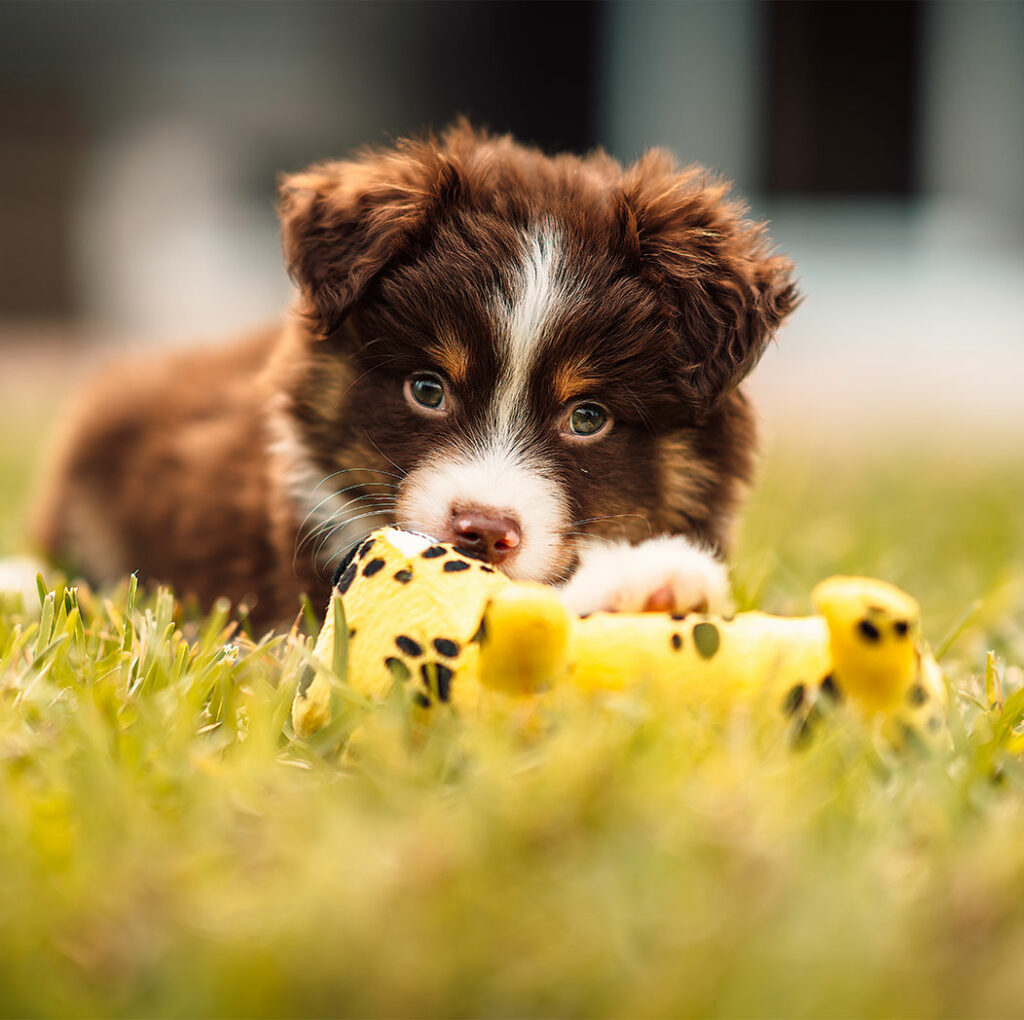Training an adult dog? We have addressed three common behaviors that pet parents struggle with when they begin their training journey:
DESTRUCTIVE CHEWING
Dogs love to chew! This is fine until they start chewing your clothes and furniture. Some dogs outgrow this behavior, and some don’t.
Here are some tips to help with problem chewers.
Taking your dog for walks 4-5x per week can do wonders for your dog’s health and reduce some excess energy that leads to chewing. Check with your doctor and veterinarian before starting any exercise program.
Ensure that your dog has chew toys and interactive play toys to keep them occupied when you are home and when you are gone.
Some dogs chew because they don’t have enough social interaction. Remember, dogs are social beings and require contact with humans or other dogs to remain emotionally balanced.
Strongly fixate your dog on chewing their toys. Proper chew toys should be durable without small pieces that can injure the dog. You can also reward your dog for chewing on their toy with a special treat like Pet Botanics Training Rewards.
DIGGING
Dogs dig because they have excess energy, are bored, possibly stressed, or to keep cool.
Taking the dog for walks can cut down on the extra energy that sometimes stimulates digging. Walk your dog 4-5 times per week. Check with your doctor and veterinarian before starting any exercise program.
Don’t dig in front of your dog. Some dogs will copy your behavior.
Give your dog lots of play toys in areas where they typically dig. The more dogs have to keep themselves occupied, the less likely they may dig.
Remember that dogs are social creatures and need to interact with people or other dogs to remain emotionally balanced. More balance and reduced stress can equate to less digging.
Make sure your dog has access to cool, shady areas of the yard. This can stop dogs who dig holes to get cool during the hotter months of the year.
Some dogs have a strong instinct to dig. Consider setting aside an area in the yard for your dog to explore and encourage the digging there. You can bury treats, toys, etc. The more your dog digs in the designated area, the less they will dig elsewhere.
JUMPING
Teaching your dog not to jump on people can be easy as long as you have patience and are consistent in your training.
Avoid excitable greetings and rough play as both typically stimulate jumping.
Most dogs jump as a form of greeting. Teach your dog to sit as a substitute for jumping.
The more you reward your dog for sitting instead of jumping, the faster they will learn to sit as opposed to jumping on you. This is where food treats can motivate many dogs and why dog trainers have used treats like Pet Botanics for years.
Practice by entering the house and rewarding the dog for sitting instead of jumping. Try repeating this 5-10 times per day if possible.
Jumping is a behavior that can be addressed positively using obedience, a consistent reward for the appropriate behavior, and patience.

